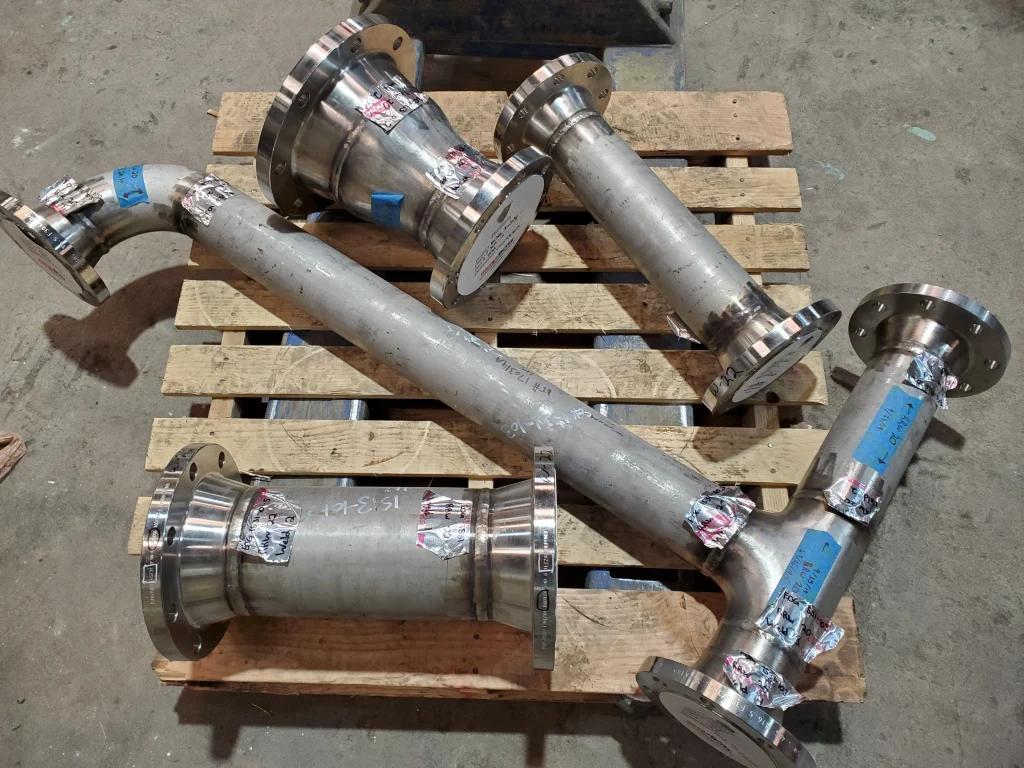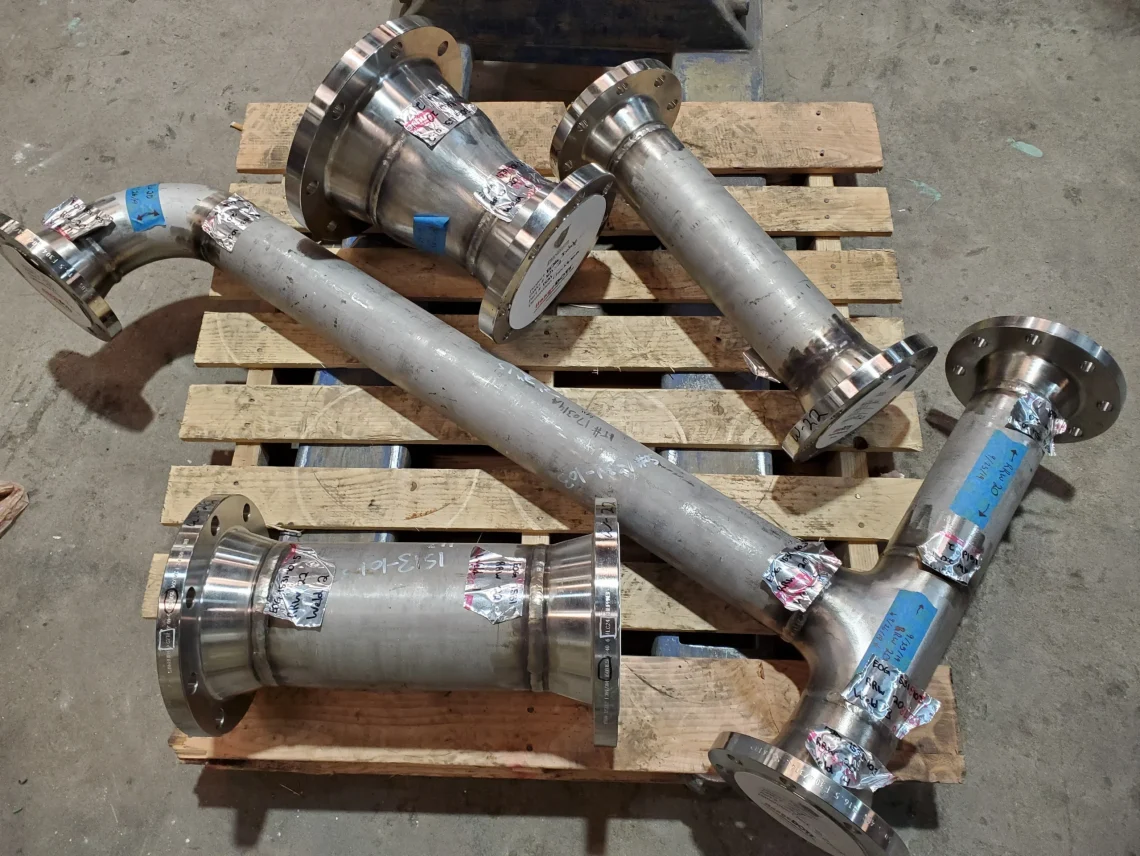
Navigating the Craftsmanship: What Is Fabrication?

Understanding Fabrication and Its Key Processes
In the vast world of manufacturing and metalworking, the process of fabrication plays a crucial role in shaping raw materials into usable structures and components. So, what is fabrication? Fabrication refers to the process of building metal structures by cutting, bending, welding, and assembling raw materials. This is where machinists and metal fabricators work together, utilizing their specialized skills to produce individual parts or large-scale metal structures for various industries.
These distinctions aren’t just technical details—they have real implications for:
- Career seekers choosing the right path
- Employers hiring the right talent
- Manufacturers optimizing their production processes
This comprehensive guide explores both professions, highlighting their unique contributions to modern manufacturing and helping you understand which career might be the right fit.
Understanding Fabrication and Its Key Processes
Fabrication is more than just shaping metal. It involves a series of steps that bring raw materials to life and turn them into functional products. While fabrication is typically associated with metalworking, it applies to a wide range of industries where materials need to be manipulated to meet specific requirements. The process generally consists of the following stages:
Cutting: The initial step in fabrication, where materials like metal sheets or rods are cut to size. This is typically done using tools such as plasma cutters, saws, or laser cutters.
Bending: After cutting, metal is bent using press brakes or other specialized equipment to achieve the desired angles or shapes.
Welding: Welding is a critical part of the fabrication process, where pieces of metal are joined together. Various types of welding techniques, such as MIG, TIG, or stick welding, are used depending on the project requirements.
Assembling: Once the parts are shaped and welded, the next step is assembly. This is where multiple fabricated components are brought together to create larger structures or functional machines.
Finishing: The final step involves adding finishing touches such as grinding, sanding, or applying protective coatings to enhance the durability and appearance of the metal structure.
Fabricators typically work in environments such as workshops, factories, construction sites, or shipyards, using a wide array of tools and machinery. Their job is to create everything from structural frames for buildings to intricate metal parts used in machinery and automotive systems.
Machinists vs. Metal Fabricators: Key Differences
While both machinists and metal fabricators work with metal, their roles, tools, and processes differ. Understanding these differences helps businesses decide whether to hire a machinist or a fabricator for a particular project.
Machinists specialize in creating precise, individual parts through processes like turning, milling, and drilling. They work with machines like lathes and CNC mills to produce high-accuracy components, often for industries such as automotive and aerospace.
Metal Fabricators, on the other hand, deal with larger-scale projects. Their job involves cutting, bending, welding, and assembling metal to create structures and frameworks. These professionals are critical in fields like construction, shipbuilding, and heavy machinery manufacturing.
To learn more about the distinction between machinists and fabricators, explore our in-depth guide on Understanding What a Metal Workshop Is Called.
The Role of Fabrication in Various Industries
Fabrication is essential to numerous industries, each relying on the process to create the products that keep businesses running. The most notable industries include:
Construction: Fabricators are crucial in building frameworks for buildings, bridges, and tunnels. Their work ensures the structural integrity of these massive projects.
Automotive: In automotive manufacturing, fabricators play a key role in creating vehicle bodies, frames, and custom parts.
Aerospace: Aerospace engineers rely on fabricators to produce critical components used in airplanes and spacecraft, where precision and safety are of utmost importance.
Energy: The fabrication of pressure vessels and pipelines is essential to the energy sector, where metalworking ensures safe and efficient transportation of gases and liquids.
By exploring The Art of Metal Fabrication, you can gain deeper insights into how metalworking plays a part in each of these industries.
Technological Advancements in Fabrication
The world of fabrication has evolved significantly with the introduction of new technologies. Some advancements include:
CNC Machines: Computer Numerical Control (CNC) machines automate the fabrication process, increasing precision and reducing human error. These machines are widely used in both machining and fabrication.
Additive Manufacturing (3D Printing): 3D printing is slowly making its mark in fabrication, enabling the creation of complex shapes and designs that were previously impossible with traditional methods.
Robotics and Automation: Robots are now being used to assist in repetitive tasks like welding and material handling, speeding up production and improving safety.
If you want to learn more about the cutting-edge technologies shaping fabrication today, check out 5 Intriguing Fabrication Examples.
The Importance of Fabrication in Modern Manufacturing
Fabrication is not just a process; it is the backbone of modern manufacturing. From crafting intricate components to building large-scale structures, fabrication ensures that raw materials are transformed into valuable products used every day across various industries. Whether it’s the precision of a machinist or the expertise of a fabricator, each professional plays a vital role in this transformation.
If you’re considering a career in fabrication or looking to partner with fabrication experts, understanding the difference between these roles and the advancements in technology will help you make informed decisions. The fabrication world is continuously evolving, and staying updated on trends and best practices can lead to better quality, efficiency, and innovation.
Ready to Explore Metal Fabrication?
If you’re interested in learning more about how fabrication can elevate your manufacturing processes, contact Red River Team for a consultation. Our experts specialize in providing high-quality metal fabrication services to meet your specific needs.
Frequently Asked Questions
1. What is the primary role of a machinist in fabrication?
A machinist’s primary role is to create precise, individual metal components using machinery like CNC mills, lathes, and grinders. They work with blueprints and detailed specifications to ensure each part meets strict measurements and tolerances. Their focus is on accuracy, precision, and quality, often using advanced tools and techniques to produce parts for industries like automotive, aerospace, and manufacturing. The parts they create are crucial in ensuring that larger systems or machines function properly and efficiently.
2. How does metal fabrication differ from machining?
While machining focuses on precision in creating individual parts, fabrication involves a broader process of shaping and assembling metal structures. Fabricators cut, bend, weld, and assemble metal to create large components or entire systems, such as frames, pipes, or machinery. Unlike machining, which often deals with smaller, highly detailed parts, fabrication is concerned with turning raw materials into functional, large-scale structures.
3. Can fabricators work on smaller, detailed parts?
Yes, some fabricators are equipped to handle detailed work, though their focus is typically on larger projects like frames or assemblies. However, in certain industries like aerospace or automotive, fabricators may be called upon to work on smaller, precise components, such as brackets or custom parts. These fabricators use specialized tools like precision cutting and fine welding techniques to ensure accuracy, allowing them to handle both large-scale and detailed fabrication tasks.
4. What materials are commonly used in fabrication?
Fabricators commonly work with materials like steel, aluminum, stainless steel, copper, and brass. The choice of material depends on the application, strength requirements, and environmental factors. For example, steel is used for heavy-duty projects, aluminum for lightweight applications, stainless steel for corrosion resistance, and copper or brass for electrical conductivity and durability in harsh environments.
5. What industries benefit most from fabrication?
Fabrication is essential to industries such as construction, automotive, aerospace, energy, and manufacturing. Each of these fields relies on fabrication to create structural components, machinery, and custom parts for production processes.
Key Takeaways
Machinists place a strong emphasis on precision and accuracy, as they often work on small, intricate parts with tight tolerances. Metal fabricators, while still requiring precision, may have more flexibility in tolerances due to the scale of their projects.
Related Blog Post
- What trade is metal fabrication?
- Is welding a type of fabrication?
- What is a metal workshop called?
- What are 5 examples of fabrication?
- What are the 3 main fabrication techniques?
- What is the process of making metal called?
- What is the 6 most common types of metal working?
- What are four common materials used in metal fabrication?
- What is the difference between sheet metal and fabrication?
- What is the difference between metal fabrication and manufacturing?
Solutions
In the realm of industrial solutions, Red River emerges as a pioneer, offering a diverse range of custom-engineered products and facilities. Among our specialties is the design and production of Custom/OEM Pressure Vessels, meticulously crafted to meet individual client requirements, ensuring performance under various pressure conditions. Our expertise extends to the domain of prefabrication, where Red River leads with distinction.
The company excels in creating prefabricated facilities, modules, and packages, reinforcing its stance as a forerunner in innovation and quality. This proficiency is further mirrored in their Modular Skids offering, where they provide an array of Modular Fabricated Skid Packages and Packaged equipment. Each piece is tailored to client specifications, underlining their commitment to delivering precision and excellence in every project they undertake.
Related Blog Post

Why Do Gas Turbines Need Fuel Water Separator Vessels, Red River

How Does a Gas Turbine Fuel Water Separator Vessel Work

What is a Gas Turbine Fuel Water Separator Vessel

Gas Turbine Fuel Water Separator Vessel Guide

Why Are Fuel Oil Pressure Vessel Separators Used in Industry
No pillar keyword set for this post.
